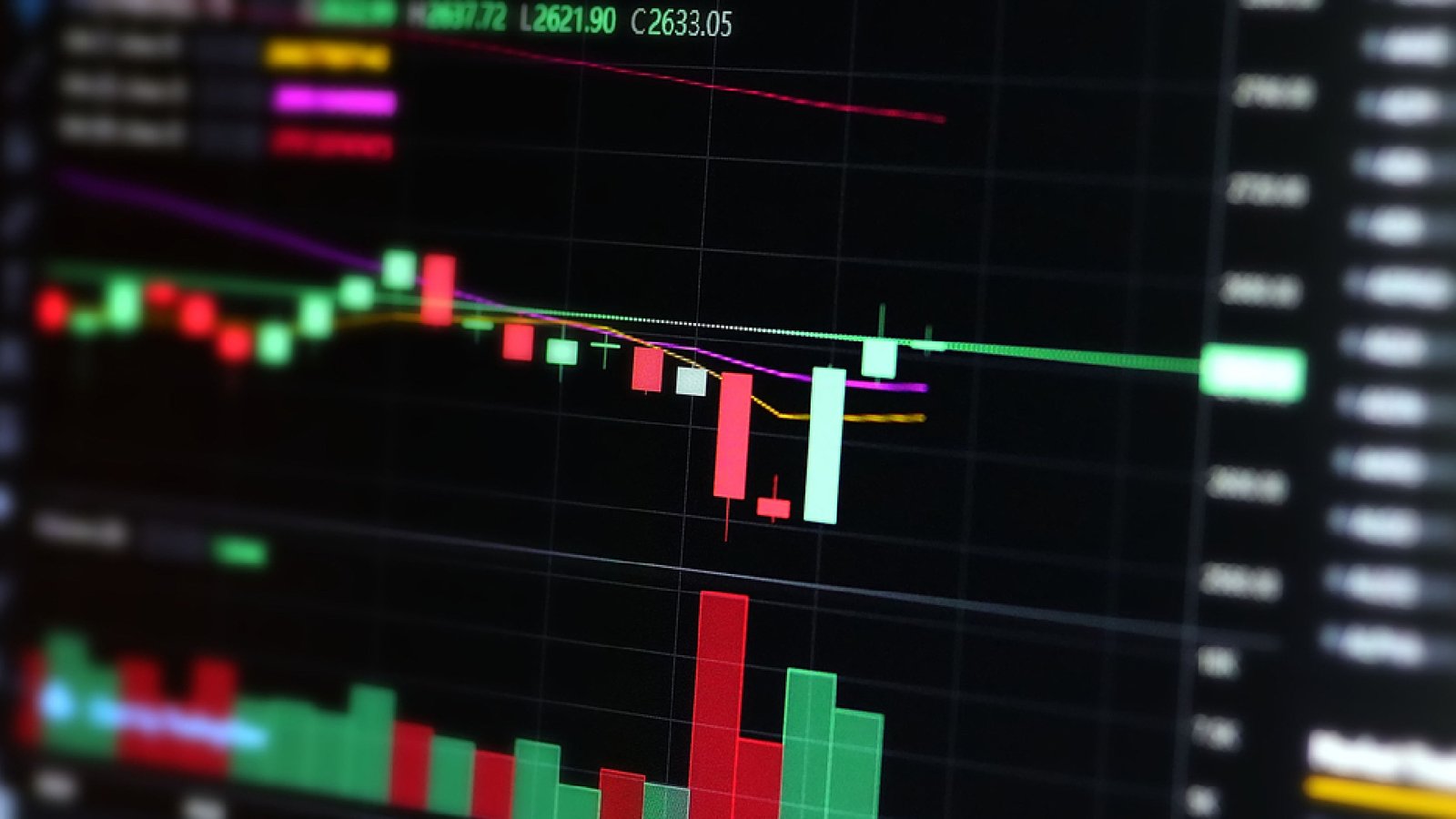
Perusing digital money outlines is fundamental for brokers to track down the best open doors on the lookout, as the specialized investigation can assist financial backers with distinguishing market drifts and anticipating the future value developments of a resource.
Specialized investigation alludes to breaking down factual patterns accumulated after some time to comprehend how the organic market of a particular resource impacts its future cost changes. Perusing crypto market graphs can assist financial backers with pursuing very educated choices when they anticipate that bullish and negative developments should end.
A bullish development alludes to a vertical cost development moved by bulls, which are a resource’s purchasers. A negative development is a descending cost of development trampled by the bears, which are the resource’s dealers. Specialized investigation can assist merchants with assessing value patterns and examples on outlines to track down exchanging open doors. The best crypto diagrams help to screen market developments, however, they do have a few provisos.
What is Technical Analysis?
“Technical’’ alludes to dissecting the previous exchanging action and value varieties of a resource, which as per specialized examiners, may be helpful indicators of future value developments of a resource. It very well may be utilized for any resource with verifiable exchanging information, and that implies stocks, prospects, products, monetary standards, and digital currencies.
Technical analysis was first presented by Charles Dow, the pioneer and supervisor of the Money Road Diary and the prime supporter of Dow Jones and Company. Dow was mostly answerable for the production of the principal stock list, which was the Dow Jones Transportation Record (DJT).
Dow’s thoughts were composed over a progression of publications distributed in the Money Road Diary, and after he died, were ordered to make what is presently known as the Dow hypothesis. The specialized investigation, it’s significant, has since developed through long stretches of examination to incorporate the examples and signs we know now.
The legitimacy of specialized examination relies upon whether the market has evaluated undeniably known data about a given resource, suggesting that the resource is genuinely esteemed given that data. Dealers utilizing specialized investigation who utilize market brain research accept that a set of experiences will ultimately rehash the same thing.
Specialized examiners might integrate basic examination into their exchanging system to decide if a resource merits drawing nearer and supplement their choices with the investigation of exchanging signs to know when to purchase and when to offer to expand benefit. A major investigation is the investigation of monetary data influencing a resource’s cost to foresee its expected development. For an organization’s portions, the key examination might incorporate investigating its profit, industry execution, and brand esteem.
Specialized experts hope to distinguish bullish and negative value developments to assist merchants with settling on additional educated choices.
Dow Hypothesis and the Six Fundamentals of the Dow Hypothesis:
Charles Dow assisted with making the main financial exchange file in 1884. The making of this record was trailed by the formation of the Dow Jones Industrial Average Normal (DJIA), which is a cost-weighted file following the 30 biggest public corporations in the US. Dow accepted the securities exchange was a solid method for estimating business conditions inside the economy and that by dissecting it, it was feasible to distinguish significant market patterns.
Dow’s hypothesis has gone through certain progressions because of commitments from a few different investigators, including William Hamilton, Robert Thea, and Richard Russell. Over the long run, a few parts of Dow’s hypothesis lost accentuation, remembering its concentration on the transportation area. While brokers track the DJT, it’s not viewed as an essential market file, while the DJIA is.
The hypothesis has six principal parts known as the six fundamentals of the Dow hypothesis. How about we go over them individually in the areas beneath?
The Market Reflects Everything:
The main precept of the Dow hypothesis is one of the central standards of specialized examination: that the market mirrors generally accessible data in the costs of resources, and costs such data in like manner. For instance, on the off chance that an organization is supposed to report positive profit, the market costs the resource upwards.
The standard nears these days known as the Efficient Market Hypothesis (EMH), which expresses that resource costs mirror all suitable data and exchange at their fair worth on stock trades.
There are Three Sorts of Patterns on the Lookout:
Dow’s hypothesis likewise proposes that markets experience three sorts of patterns. Essential patterns are significant market developments and will generally last months or years. Essential patterns can either be a buyer market, implying that the costs of resources are climbing over the long run, or a bear market, meaning they are dropping down over the long run.
Inside these essential patterns, there are optional ones, which might neutralize the essential pattern. The auxiliary patterns can be pullbacks in positively trending markets, where resource costs briefly move back, or revitalizes in bear markets, where costs briefly climb before proceeding with their downtrend.
There are likewise tertiary patterns, which will generally be most recent a week or barely a week and are in many cases just considered commotion in the market that could be overlooked, as it won’t influence long-haul developments.
Essential Patterns Have Three Stages:
Dealers can track down valuable open doors by analyzing various patterns. For instance, during a bullish essential pattern, dealers can exploit a negative optional pattern to purchase a resource at a lower cost before it continues to rise. Perceiving these patterns is troublesome, particularly considering the Dow hypothesis it says essential patterns have three stages.
The primary stage, the gathering stage for a buyer market, and the dispersion stage for a bear market go before an opposite pattern and happen when the market feeling is still transcendently pessimistic on a positively trending business sector or good during a bear market. During this stage, brilliant dealers comprehend that a recent fad is beginning and either collect in front of a vertical development or convey in front of a descending course development.
The subsequent stage Is known as the public support stage. During this stage, the more extensive market understands another essential pattern has started and either begins purchasing more resources for exploiting up-value developments or offering to cut misfortunes in descending developments. The subsequent stage sees costs increment or lessening quickly.
The last stage is known as the abundance stage during buyer markets, and the frenzy stage during bear markets. During the abundance or frenzy stage, the more extensive public keeps on hypothesizing that the pattern is going to end. Market members who comprehend this stage begin selling fully expecting a negative essential stage or purchasing fully expecting a bullish essential stage.
Records Should Correspond:
The fourth precept of the Dow hypothesis proposes that a market pattern is possibly affirmed when both records demonstrate that a recent fad is beginning. As per the hypothesis, on the off chance that one record affirms another essential vertical pattern while one more remains parts in an essential descending pattern, brokers shouldn’t expect another essential vertical pattern is begin.
Here, it merits bringing up Dow’s principal files at the time were the Dow Jones Modern Normal and the Dow Jones Transportation Normal, which would normally connect more often than not, as the modern movement was intensely connected to the transportation market in those days.
Volume Affirms Patterns:
The fifth principle of the Dow hypothesis says that exchanging volume ought to increment assuming the cost of a resource is moving toward its essential pattern, and decline assuming that it is moving against it. Exchanging volume is a proportion of how much a resource has been exchanged over a particular period, and is viewed as an optional marker, wherein low volume flags that a pattern is frail, while enormous exchanging volume flags that a pattern has major areas of strength for is.
Assuming that the market sees a negative optional pattern with low volume during a bullish essential pattern, it implies that the optional pattern is moderately powerless. Assuming the exchanging volume is critical during the optional pattern, it shows that more market members are beginning to sell.
Patterns are legitimate Until an Inversion is Clear
At last, the 6th precept of the Dow hypothesis recommends that pattern inversions ought to be treated with doubt and wariness, as inversions in essential patterns can be mistaken for auxiliary patterns.
What are Candle Outlines?
Cryptographic money market patterns can be checked out and dissected in numerous ways, with a few kinds of diagrams being accessible to dealers. Crypto candle graphs offer more data due to the idea of candles.
Crypto candle diagrams kick off across the level access and confidential information on the upward hub, very much like line and visual charts. The primary contrast is that candles show whether the market’s value development was positive or negative in a given period, and how much.
Crypto market graphs can be set to various periods, with candles addressing that period. If a crypto exchanging outline is set to four hours, for instance, every candle will address four hours of exchanging action. The exchanging time frame picked relies upon a merchant’s style and methodology.
A candle essentially includes a body and wicks. The body of every candle tends to its opening and closing expenses, while the top wick tends to how high the expense of cryptographic cash got during that period, and the base wick tends to how low it got.
Additionally, candles might have two distinct tones: green or red. Green candles show the cost went up over the period viable, while red candles show that the cost declined.
The basic construction of candles can offer clients a great deal of data. Specialized investigators might utilize candle examples to, for instance, recognize potential pattern inversions. Digital money dealers ought to know about bullish and negative candle designs.
A long wick at the highest point of a flame’s body can, for instance, propose brokers are taking benefits and an auction might happen soon. Going against the norm, a long wick at the resource each time the cost drops.
Essentially, a candle in which the body possesses practically the entirety of the space and has exceptionally short wicks may indicate that there’s a solid bullish feeling assuming it’s green areas of strength for or opinion if it’s red. Then again, a candle with practically nobody and long wick flags that neither purchasers nor merchants are in charge of.
Backing and Obstruction levels:
Perusing live crypto candle graphs is more straightforward utilizing backing and obstruction levels, which can be related to the utilization of trendlines. Trendlines are lines drawn on diagrams by interfacing a progression of costs.
Support levels are costs during pullbacks in which digital forms of money or some other resource are supposed to end because of a convergence of purchasing revenue at that level. Obstruction levels are costs in which there is concentrated selling interest. Concentrated trading intrigues make it hard to move beyond these levels.
Backing and obstruction levels can be recognized through trendlines, as these make it simpler to distinguish crypto graph designs. An upturn line is drawn involving a digital currency’s most reduced and second-least lows in a given period. Levels contacting this trendline are viewed as help.
A downtrend line is drawn using the crypto’s most raised and second-most important highs, with levels reaching this line being seen as check levels. As the name recommends, downtrend lines are utilized during downtrends, while upswing lines are utilized. Different methodologies can be utilized given trendlines and backing and opposition levels. For example, a few specialized examiners just purchase close to the help of upturn lines and sell close to the obstruction of downtrend lines.
Frequently, the cost of a digital currency might move sideways in a fairly steady reach. In September and November 2018, for instance, Bitcoin
Exchanged somewhere in the range of $6,000 and $6,500 before dropping to $3,200 by December 2018. For this situation, obstruction levels are at the highest point of the reach, while help levels are at the lower part of the reach. A breakdown might happen assuming the cost of the digital money dips under that reach with areas of strength for a, or a breakout if It moves up with major areas of strength for development.
Backing and opposition levels can likewise be resolved by utilizing long-haul moving midpoints. These are normal specialized pointers that smooth cost information by making a continually refreshed cost normal.
What is the Moving Average?
A moving average (MA) is one of the most usually utilized kinds of specialized markers and removes the commotion by creating a typical cost for a given cryptographic money. Moving averages can be acclimated to periods and deal with valuable signs while exchanging ongoing crypto graphs.
The most regularly utilized moving midpoints are utilized for 10, 20, 50, 100, or even 200-day time spans. These make market drifts more noticeable, with a 200-day moving normal being viewed as a help level during an upswing, and an opposition level during a downtrend.
There are various sorts of moving midpoints utilized by dealers. A simple moving average (SMA) essentially includes the typical cost of a resource over a decided period and partitions it by the number of periods.
A weighted moving average (WMA) gives more weight to ongoing costs to make them more receptive to new changes. Also, an exponential moving average (EMA) gives more weight to ongoing costs however isn’t steady with the pace of lessening between one value and its former cost.
Moving midpoints are trailing results as they depend on past costs. Brokers frequently utilize moving midpoints as signs to trade resources, with the periods decided to rely upon their periods.
The 50-day and 200-day moving midpoints are firmly watched in crypto exchanging graphs, as when the 50-day SMA crosses underneath the 200-day SMA, a supposed passing cross is framed, proposing a looming cost drop. At the point when the 50-day SMA crosses over the 200-day SMA, a brilliant cross is framed, recommending a cost rise.
Other Primary Specialized Markers:
Here, we’ll investigate different other famous specialized markers out there.
On-Balance Volume Pointer (OBV)
The on-balance volume marker is a specialized pointer zeroing in on a digital money’s exchanging volume. It was made by Joseph Granville under the conviction that exchanging volume was a significant driver of cost developments in the business sectors.
The OBV is a combined pointer that ascents and falls in light of the exchanging volume of the days included inside a particular period. It is utilized to affirm patterns, as while taking a gander at live crypto outlines brokers ought to see rising costs joined by a rising OBV. Falling costs ought to be joined by a falling OBV.
Moving Average Convergence Divergence (MACD)
The moving typical intermingling dissimilarity is a pointer that actions the distinction between the 12-day and 26-day EMAs to shape the MACD line and is utilized to distinguish both trade signals. It’s an oscillator, meaning a pointer changes above and under a focused line.
At the point when the 12-day EMA crosses beneath the 26-day EMA, the MACD shows a sell signal, while the contrary signal now is the right time to purchase the resource viable. The more noteworthy the distance between the two lines, the more grounded the MACD’s perusing is!
The pointer likewise has a sign line, which is a 9-day EMA. The MACD crossing over the sign frequently infers now is the ideal time to purchase while crossing underneath it suggests now is the ideal time to sell. The MACD pointer likewise incorporates a histogram for estimating the contrast between the MACD and the sign line.
Relative Strength Index (RSI)
The general strength index (RSI) is a force marker used to quantify whether a resource is being overbought or oversold. The RSI is displayed as an oscillator, meaning a line between two limits, and can go from 0 to 100.
The pointer utilizes 14 days and a digital currency is considered oversold when its worth dips under 30 and is considered overbought when its worth moves more than 70. Being overbought is a sell signal while being oversold is a purchase signal.
Bollinger Groups:
Created by John Bollinger, Bollinger groups assist merchants with recognizing transient cost developments in the costs of resources, including cryptographic forms of money. The Bollinger groups are made by utilizing a 20-day moving normal and adding and deducting a standard deviation from the moving normal.
The boundaries of the Bollinger groups can be modified, with the groups growing and contracting given the cost of the cryptographic money. The groups show times of sequential unpredictability and shouldn’t be utilized all alone, yet with different pointers.
At the point when the cost of a digital currency moves over the upper band, it’s considered overbought, while a move under the lower band is considered oversold. Bollinger groups depend on the idea that times of low instability are trailed by times of high unpredictability, suggesting that when the groups separate during times of high instability, the continuous pattern might be concluding. Essentially, when the groups are near one another, the resource might be expected for a time of high unpredictability.
Conclusion:
To get it and break down digital money outlines, you want to zero in on key pointers like cost patterns, exchanging volume, and market opinion. Search for examples and arrangements that can assist with anticipating future cost developments. Specialized investigation apparatuses, like moving midpoints and backing/opposition levels, can give extra bits of knowledge. Remain informed about news and advancements in the crypto market, as they can affect costs. Keep in mind, that examining diagrams requires practice and experience, so cheer up if it feels overpowering from the beginning. Continue acquiring and refining your abilities!
FAQs:
The following are 5 FAQs about understanding and analyzing cryptocurrency charts:
Q: What are a Few Vital Markers to Search For in Digital Money Graphs?
A: Key pointers incorporate cost patterns, exchanging volume, and market opinion.
Q: How Might Specialized Examination Apparatuses help in Breaking Down Digital Currency Graphs?
A: Specialized examination devices like moving midpoints and backing/opposition levels can give experiences into value developments and expected patterns.
Q: What would it be a good idea for me to consider while breaking down examples and Developments in Digital money Graphs?
A: Search for designs like triangles, head and shoulders, or twofold tops/bottoms. These can assist with anticipating future cost developments.
Q: How could Remaining informed about news and Advancements Affect my Investigation of Digital money Diagrams?
A: News and improvements can impact market opinion and essentially affect digital money costs.
Q: Is Breaking down Digital Money Outlines Hard for Novices?
A: It tends to be trying from the outset, yet with training and experience, you can work on your comprehension and investigation abilities. Continue to learn and don’t get deterred!






